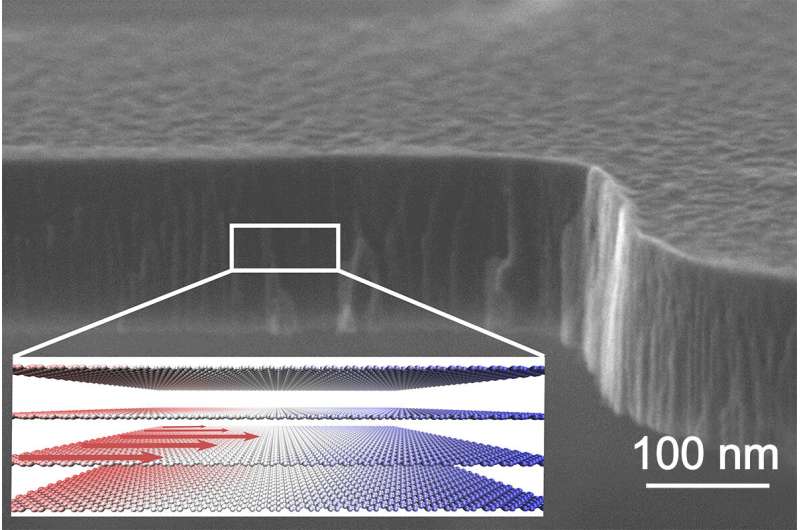This article has been reviewed according to Science X's editorial process and policies. Editors have highlighted the following attributes while ensuring the content's credibility:
fact-checked
peer-reviewed publication
trusted source
proofread
Examining the flow of thermal energy in purified ribbons of graphite

Scientists from the Institute of Industrial Science at The University of Tokyo studied the flow of thermal energy in purified ribbons of graphite and showed that heat can move more like a liquid, rather than diffusing randomly, under certain conditions. This work can lead to more efficient heat removal from electronic devices, including such as smartphones, computers, and LEDs.
Before the modern understanding of thermodynamics, scientists sometimes thought of heat as a fluid called "caloric." However, we now know that heat is actually the random kinetic energy possessed by the vibrating atoms or molecules that make up a material.
Sometimes, the vibrations can be thought of physical particles called phonons, which are the main contributors of heat conduction in semiconductors. In a surprising twist, in certain materials like graphite the phonons may indeed behave in a manner very similar to a fluid. However, this theory has remained relatively obscure.
Now, a team of researchers led by the Institute of Industrial Science at The University of Tokyo have used theoretical and experimental results to better understand the fluid-like nature of phonons. They show that when a sample of graphite is made from isotopically pure carbon, meaning that only carbon-12 atoms are present, heat can be conducted much more rapidly, almost like water flowing through a pipe.
This was termed "phonon Poiseuille flow," based on the theory of viscus fluids flowing in a closed tube. The effect was strongest in graphite at a temperature of about 90 Kelvin. However, natural graphite contains about 1% other isotopes of carbon, particularly carbon-13, which limits this effect in natural samples.
"Our study clarified the theoretical criteria for the formation of phonon Poiseuille flow in graphite, a material that shows strong anisotropy, which had not been clear before," lead author Dr. Xin Huang says. Graphite, also known as pencil lead, is very inexpensive and easy to produce.
As a result, it is already being used for heat dissipation in some electronic devices that produce a lot of waste energy during operation. Using purified graphite that had at most 0.02% carbon-13, the team was able to observe a heat conductivity that was more than double the value of natural graphite. The fact that this enhancement only occurred over a specific temperature range was evidence that fluid-like collective motion of phonons was the mechanism.
"In conventional Poiseuille flow, the velocity is highest near the center, which is what we propose happens with the phonons in our experiments," senior author Professor Masahiro Nomura says. In addition to graphite, this phenomenon has also been observed in solid helium and black phosphorus.
Theoretically, this phenomenon is also possible even at room temperature. This work can help keep sensitive computer processors cool, even as they increase their density inside devices.
The findings are published in the journal Nature Communications.
More information: Xin Huang et al, Observation of phonon Poiseuille flow in isotopically purified graphite ribbons, Nature Communications (2023). DOI: 10.1038/s41467-023-37380-5
Journal information: Nature Communications
Provided by University of Tokyo





















